Have you ever thought about how trees survive the winter? The same trees line the streets of our neighbourhoods one winter after another. They are always there, through the hot and cold months. Trees do not have the mobility and adaptability that animals possess, yet most stand firm and thrive through every change of season. What most of us don’t know is that trees, and plants in general, have surprising ways of surviving and thriving through the years.
Dig deeper into how trees resist the challenging winter season and how tree owners can help protect and nurture them as they weather the cold nights and days.
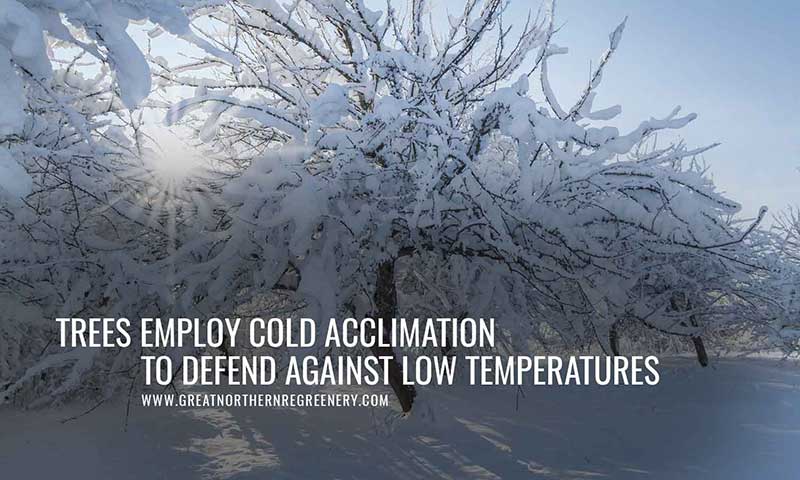
Trees biologically prepare for the cold
As temperatures start to drop at the onset of winter, trees enter a process called cold acclimation. In this phase, a tree activates the biological mechanisms it needs to withstand extremely low temperatures. Trees undergo cold acclimation in the fall when temperatures are still well above the freezing point until they develop freezing tolerance.
The rate of cold acclimation and freezing tolerance vary for every tree species. A plant’s genetic traits and environmental conditions can influence its resistance to cold. This explains why some species, and varieties within species, overwinter more successfully than others. For example, fruit trees (like grape, peach, and apricot) may suffer winter injury when exposed to temperatures below -25 C.
Cold acclimation is a gradual process. As a tree prepares itself for the colder months, a series of physiological changes take place in its roots, leaves, and stems. Specifically, these metabolic and structural adjustments are:
- Photosynthesis and sugar metabolism – Because low temperatures limit the absorption of light and heat among plants, trees reduce their photosynthetic capacity. Trees produce their food in advance and store them in roots and stems.
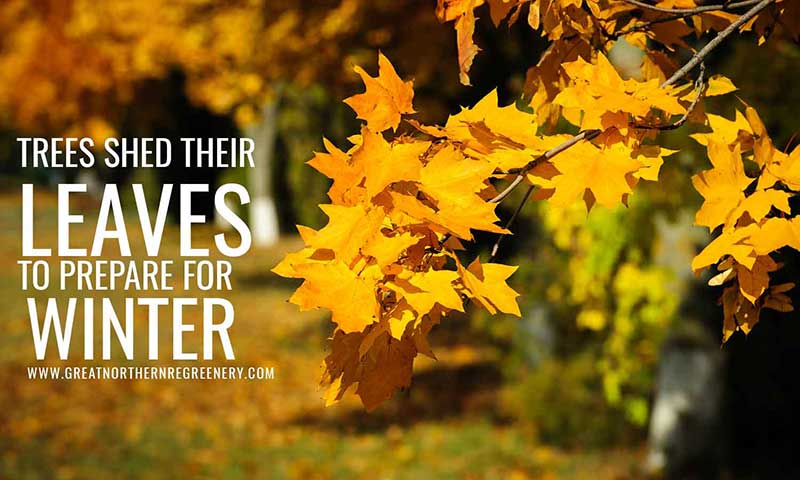
- Leaf drop – In winter, leaves add weight and wind resistance to deciduous trees. Their surface area allows cold winds to draw off moisture, and collect snow, increasing pressure on the branches. For these reasons, deciduous trees drop their leaves in the fall.As they prepare for winter, trees create an abscission layer of cells found at the base of the steam of each leaf. This causes the leaves to fall away as a result. Dropping the leaves helps leaf-bearing trees survive the hardships of the season.
- Trees produce antifreeze – Another winter survival mechanism that trees use is sweetening their cellular fluids. During autumn, a tree converts its starch reserves into sugar. These sugars make the tree’s cellular fluids highly concentrated, lowering the cells’ freezing point.
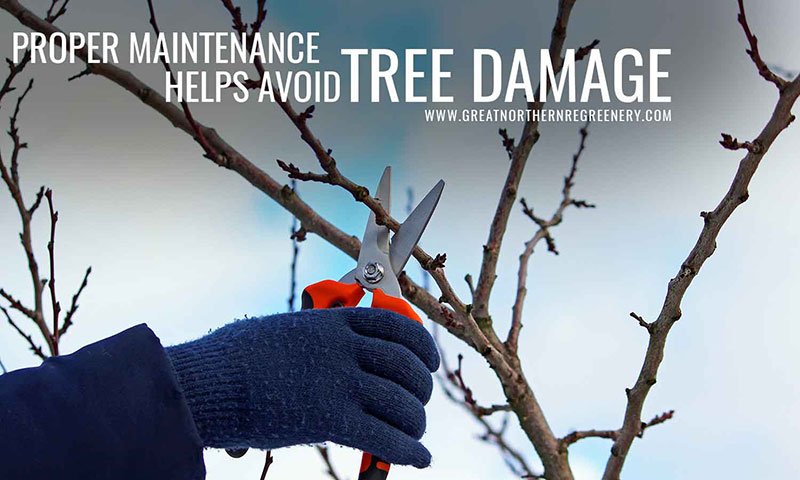
Tree damage and risks
While trees are capable of adjusting to harsh conditions, tree owners also have a role to play in protecting trees from the dangers of winter. Make sure to protect your trees from the following:
- Root injury – The leading cause of injured tree roots is cold soil. Exposure to temperatures below 10 C can trigger dormancy in the tree’s root system. Continued exposure to cold temperatures may lead to root damage and even death. Dry and sandy soils are particularly prone to frost penetration. Mulch new trees and shrubs with six to eight inches of either straw or wood chips to avoid damage from freezing soil temperatures.
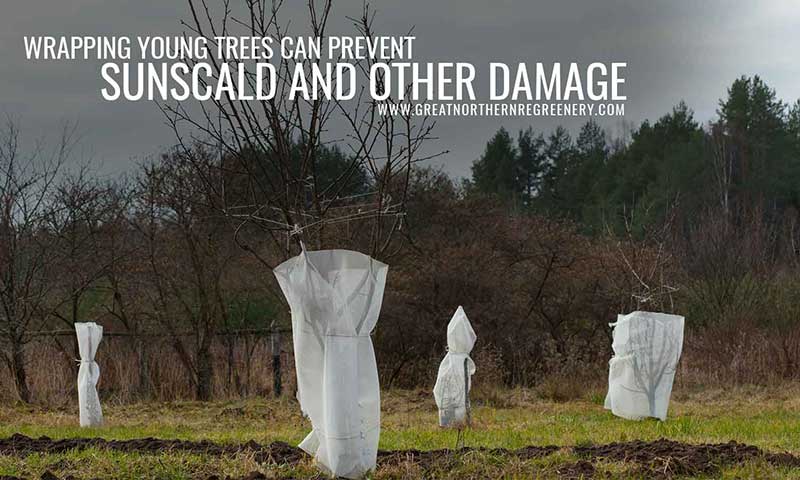
- Sunscald – Sunscald is caused by bark refreezing after it had thawed. Warmer weather and sunlight can reactivate a dormant tree during winter. Once the sun sets, temperatures fall; and the affected part of the tree may not be able to become dormant again before freezing. Newly planted trees, young trees, and trees with thin barks (e.g. honey locust, cherry, maple, plum, crabapple) are more vulnerable to sunscald. Older trees are less prone to sunscald due to their thick bark helping to insulate the tree.
Prevent sunscald by wrapping the trunk with white paper before winter hits. This helps reflect the heat of the sun’s rays away from the bark. Be sure to wrap your tree after it has gone dormant, and remove the wrap before the tree becomes active again.
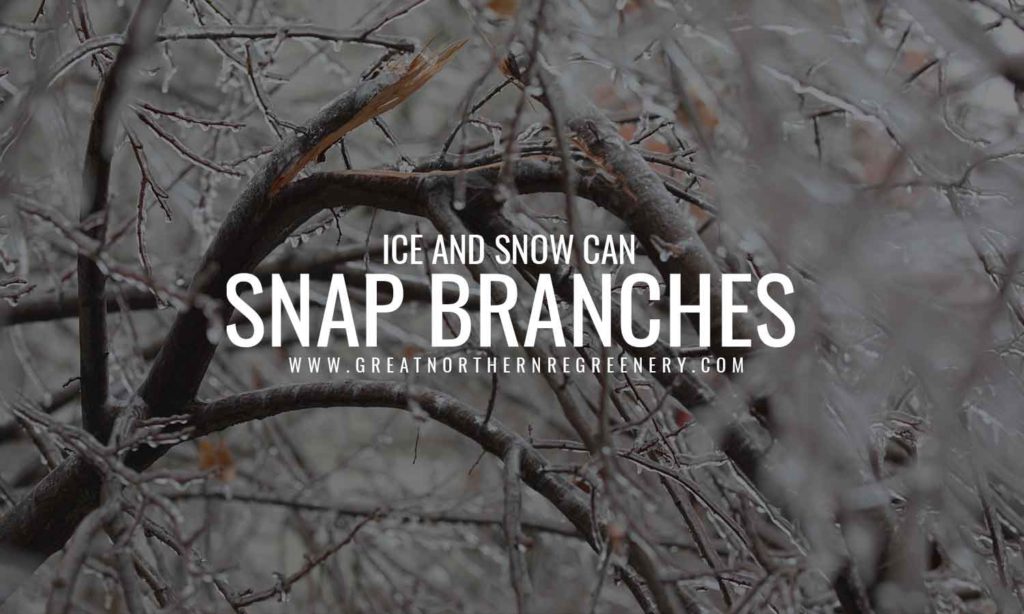
- Snow and ice damage – Ice storms and heavy snow can bend or break your tree’s branches. Trees with more than one main stem, upright evergreens like juniper and arborvitae, trees with multiple stems, and trees with poor form or those that have narrow branch crotches are all prone to injury from snow and ice.Fully wrapping small trees can help prevent snow damage. Proper pruning to remove weak branches can also lessen the risks. For trees with wide-spreading canopies or large trunks, contact a professional arborist who will devise the most effective strategy to protect your tree.
- Bud death – Shrubs and deciduous trees are at risk of bud death in winter, with flower buds more vulnerable to cold than leaf buds and stems. Prevent this by establishing vulnerable plants in sheltered locations.
- Pests – For wild animals, food is always in short supply in winter. Rodents and deer may feed on bark, twigs, flower buds, and leaves, injuring and sometimes killing trees and shrubs.

Winter tree care tips
To help you keep your trees healthy and free from damages this winter, follow these tips:
- Water – Trees, especially evergreen trees, can get dehydrated in winter. A tree that is drying out is less likely to withstand cold temperatures. Make watering your trees in the fall before the ground freezes a seasonal habit. Use a soaker hose placed at the base of the tree for one hour twice every week.
- Mulch – A layer of mulch can protect your trees from temperature changes. Spread a layer of mulch (wood chips, leaves, or other organic materials) at least eight centimetres deep. Add a layer of compost to provide a ready supply of nutrients for healthy roots.
- Use tree guards – Prevent animals from drawing near your trees by placing a tree guard (wire mesh or plastic) for protection.
If you need expert assistance for any tree service needs (like tree removal, cabling and bracing, tree inspection), contact Great Northern ReGreenery. We serve the Alliston, Barrie, Bradford, Newmarket, and Aurora areas. Call us at (905) 775-7444, and we will help keep your trees in top shape this winter.





